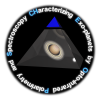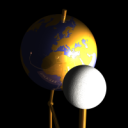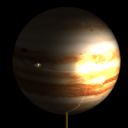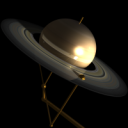
Contact
CHEOPS
Overview
on CHEOPS
BSCW Server
CHEOPS
Optics
3D Spectrograph
 |
Consortium Contact |
History of CHEOPS |
Project Overview |
Publications on CHEOPS |
Intranet BSCW Server |
|---|---|---|---|---|---|
| News | What is CHEOPS |
Science | Adaptive Optics |
ZIMPOL | Near-Infrared 3D Spectrograph |
|
CHaracterizing
Extrasolar planets by
Opto-infrared
Polarimetry and
Spectroscopy The CHEOPS project aims at constructing a 2nd generation instrument for one of ESO's VLTs for direct detection of extrasolar giant planets. The phase-A feasibility study of this project ended on November 2 2004. For the extraordinarily demanding task of overcoming a contrast of at least 18 magnitudes across a separation of half a second of arc, the instrument requires
|
 Science
ScienceCHEOPS aims at direct detection, identification and characterization of extrasolar mature and young planets. More... |
|
 XAO
XAOThe new xetreme AO system will operate a 1600 actuator DM at 2kHz using a pyramid sensor at 0.8 micron. More... | ||
 ZIMPOL
ZIMPOLis a differential polarimetric imager capable of measuring polarization degrees down to 10-5 per resolution element. More... | ||
 The NIR IFU
The NIR IFUis an integral field spectrograph for the very-near ("opto-") infrared. More... |